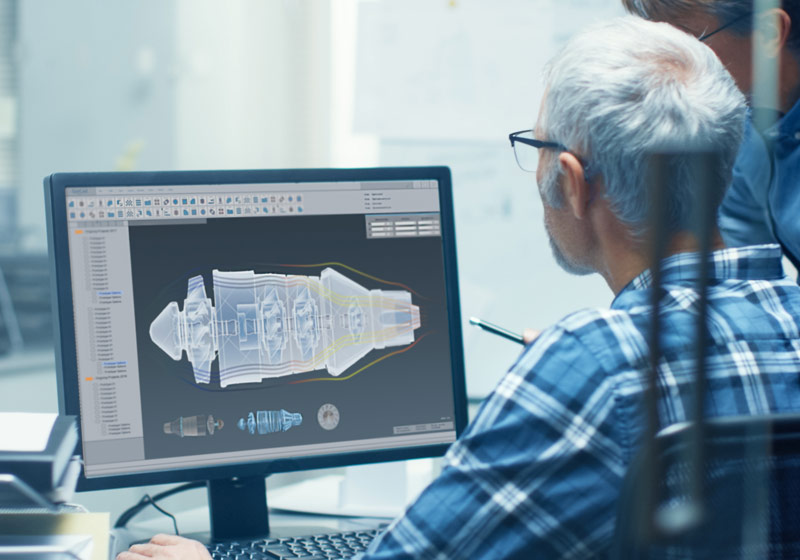Executive Summary
40% acceleration in quality inspection cycles through AI-powered predictive analytics
Real-time defect detection improves first-pass yields and reduces costly rework
Automated AS9100 compliance documentation ensures accuracy and audit readiness
Typical ROI of 280% within 18 months of deployment
Predictive maintenance integration prevents quality issues before they occur
Estimated reading time: 8 minutes
Why Aerospace Needs Predictive Quality Control
In aerospace manufacturing, a single defective part can ground fleets, trigger regulatory penalties, or even compromise safety. Traditional quality control methods—manual inspection, sampling, and post-production testing—have improved over time, but they remain reactive. Defects are often caught only after components are completed, leading to rework costs that can reach 15–20% of production budgets.
Human inspectors typically achieve 80–85% accuracy under the best conditions, but fatigue and complexity reduce performance. Documentation for AS9100 compliance consumes significant hours without improving actual inspection quality. Combined, these factors make quality a bottleneck that slows delivery and increases cost.
The AI Advantage: From Reactive to Predictive
AI aerospace quality control brings intelligence and automation into inspection, shifting the model from detection to prevention.
Real-Time Defect Detection
Computer vision systems identify defects instantly with 95%+ accuracy, cutting false positives by 70%.
Predictive analytics use sensor data—temperature, vibration, pressure—to forecast defects hours before they appear.
Data fusion integrates visuals, thermal imaging, and acoustic data for unmatched accuracy.
AS9100 Compliance Automation
Automated documentation reduces record-keeping time by 60%
Full component genealogy ensures traceability under Section 8.5.2
AI-driven non-conformance management triggers corrective action automatically
Analytics uncover systemic quality issues to support continuous improvement
Achieving 40% Faster Inspections
AI systems accelerate inspections through:
Parallel Processing: Inspecting multiple features simultaneously
Automated Classification: Instantly sorting defect types and severity
Predictive Scheduling: Optimizing queues and resource allocation
Intelligent Sampling: Reducing unnecessary inspections by up to 30%
Case Example:
Before AI: 65-minute inspections, 82% accuracy, 25 minutes of paperwork
After AI: 39-minute inspections, 96% accuracy, 8 minutes of paperwork
Result: $7M annual savings and a 97% first-pass yield
Key Applications in Aerospace
Advanced Materials Inspection
Detecting fiber misalignment and delamination in composites with 94% accuracy
Layer-by-layer quality control in additive manufacturing reduces defects by 55%
Machine learning optimizes surface finish for machining precision
Supply Chain Quality Intelligence
AI ranks supplier risk and predicts quality issues in advance
Incoming inspections cut by 35% through risk-based allocation
Aggregated quality data highlights systemic issues across 1,000+ suppliers
Predictive Maintenance Integration
Linking equipment health to product quality outcomes
Forecasting tool wear and recommending replacements
Detecting process drift before non-conforming products are made
ROI and Implementation
Financial Impact
Inspection labor savings: $180K–$320K per line
Reduced rework: $450K–$850K annually
Scrap reduction: $125K–$275K annually
Typical ROI: 280–350% within 12–18 months
Implementation Roadmap
Phase 1 (1–4 months): Pilot a high-impact line, train models on historical data
Phase 2 (5–8 months): Expand lines, refine algorithms, train staff
Phase 3 (9–12 months): Scale across all facilities, integrate with supply chain quality
Success Factors
Executive sponsorship ensures resources and alignment
Cross-functional teams across IT, quality, and engineering
Strong data management for effective AI training
Comprehensive training and change management
Overcoming Challenges
Legacy Systems: Integration via APIs and middleware
Cybersecurity: Compliance with DFARS and NIST standards
Verification: Documented validation for AS9100 certification
Workforce Readiness: 40–60 hours of training per inspector
The Future of AI in Aerospace Quality
Emerging trends include:
Digital Twin Integration for virtual testing before production
Federated Learning to share insights across facilities without exposing data
Autonomous Quality Systems capable of self-adjusting processes in real time
As regulatory frameworks evolve and primes demand higher supplier standards, predictive quality will move from optional to essential.
Conclusion: The Predictive Imperative
AI aerospace quality control is not just an efficiency upgrade—it is becoming the foundation of safe, compliant, and competitive aerospace manufacturing. With inspection cycles accelerated by 40%, compliance automated, and ROI achieved within months, AI offers a clear path forward for manufacturers ready to lead.
Those who adopt predictive quality control today will secure cost savings, improved safety, and competitive edge for years to come.
Ready to accelerate your aerospace quality control with AI?
Contact Netray’s aerospace quality experts to learn how we deliver 40% faster inspections while enhancing compliance and safety.
👉 [Schedule a technical consultation]
👉 [Download the AI Implementation Roadmap Whitepaper]
Keywords: AI aerospace quality control, predictive quality management, aerospace inspection automation, AS9100 compliance, AI quality assurance, aviation safety systems, smart manufacturing aerospace
Internal Links:
AS9100 compliance services page
Aerospace manufacturing solutions portfolio
AI technology capabilities overview
Case studies and success stories
Technical resources and whitepapers



